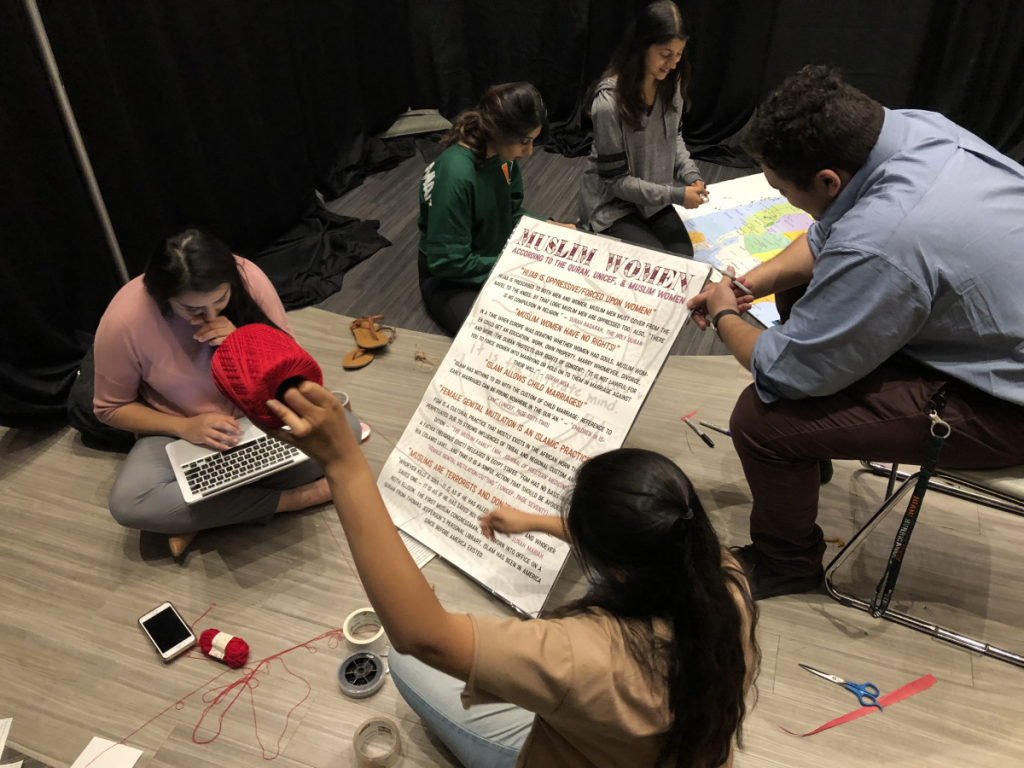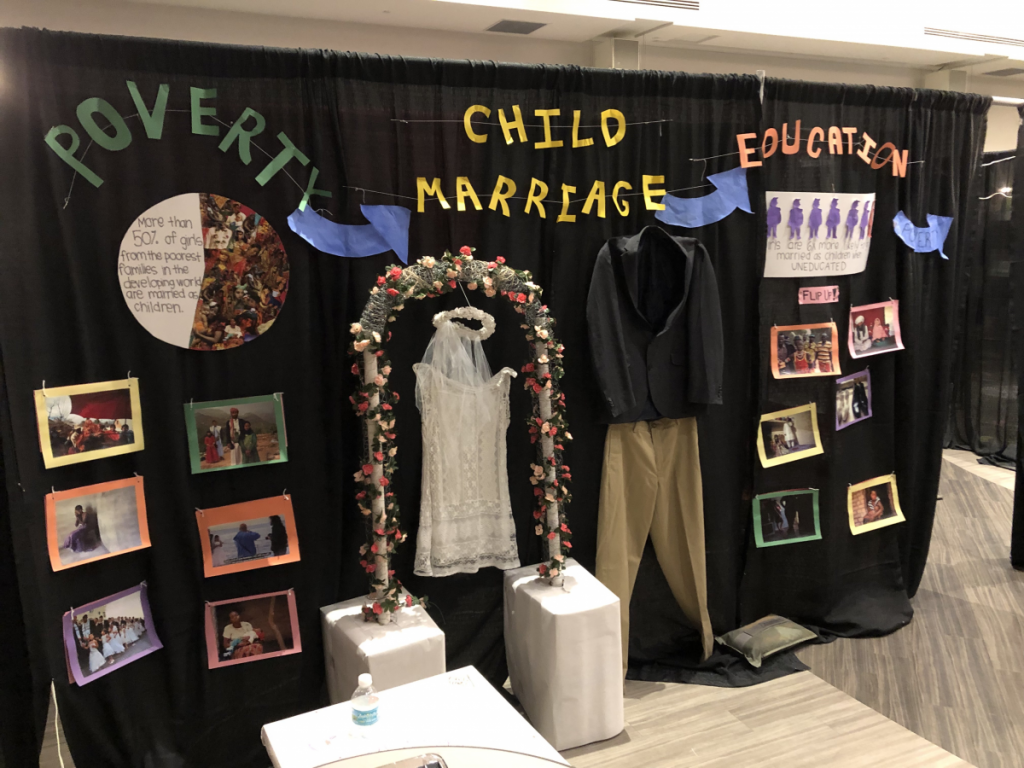Enclosed in a small room with curtains for walls, several SpectrUM students scramble to pin up posters, make a bed, and decorate the make-believe bedroom of someone who is queer, suicidal and reaching out for help. This room was just one of the several packed into the Shalala Student Center Ballrooms for Tunnel of Oppression last year.
Tunnel of Oppression has become a yearly tradition at the University of Miami, a “social justice haunted house” that aims to educate its visitors on the ways in which various forms of oppression manifest themselves in society.
Each exhibit is set up inside the ballroom as an individual room constructed within the confines of four black walls. Lights and images are often projected onto the black walls and scenarios are recreated using a variety of props. Visitors will also be given headphones that allow them to listen to accompanying songs, poems and newscasts – anything to shed light on the many issues at hand.
Rooms will cover topics such as religion, gender, sexuality, racism, the environment, education and immigration.
“These are issues that are actually happening in the world right now, and not a lot of people talk about them, and that’s something that should change,” said sophomore Naomy Lelis, who has been working on the “race” room this year.
Emma Lam, the president of SpectrUM, has worked on the Tunnel of Oppression for the past two years.
“The goal is to foster empathy and acceptance,” said Lam, a junior majoring in psychology. “For example, how can we show somebody who doesn’t experience certain types of oppression to understand them?”
For Lelis, the goal is to inspire action and tangible change.
“Something I’ve really enjoyed has been finding different ways of getting people’s emotions out and a reaction, because once there’s a reaction, your body tends to think about that reaction you had and you’re like, ‘wow, this really touched my feelings and I really should do something about it,’” Lelis said.
Last year, Tunnel of Oppression attracted over 600 guests. Junior Sharnikha Saravanan was then a first-time visitor. Now, she’s designing the immigration room.
“I loved designing this room especially since I am an immigrant, and it gave me a chance to show the parts that are not usually seen by people,” Saravanan said. “The focus was to get people to look at the facts and reality of life for immigrants around the world instead of the myths that they hear from people they know or the media.”
At the end of the exhibitions, the interconnectedness room provides a space for attendees to learn about local opportunities for involvement and to speak to community partners that deal with these issues.
Tunnel of Oppression will take place Jan. 22-24 from 4 p.m. to 10 p.m. in the Shalala Student Center Ballrooms. Students can volunteer to work during the event.









